#satinskies
Explore tagged Tumblr posts
Text

𝑇ℎ𝑒 𝑚𝑜𝑠𝑡 𝑏𝑒𝑎𝑢𝑡𝑖𝑓𝑢𝑙 𝑚𝑜𝑚𝑒𝑛𝑡𝑠 𝑎𝑟𝑒 𝑓𝑜𝑢𝑛𝑑 𝑖𝑛 𝑠𝑖𝑚𝑝𝑙𝑖𝑐𝑖𝑡𝑦. 𝑊ℎ𝑒𝑡ℎ𝑒𝑟 𝑖𝑡’𝑠 𝑎 𝑓𝑒𝑤 𝑞𝑢𝑖𝑒𝑡 𝑚𝑖𝑛𝑢𝑡𝑒𝑠 𝑖𝑛 𝑡ℎ𝑒 𝑚𝑜𝑟𝑛𝑖𝑛𝑔 𝑜𝑟 𝑡ℎ𝑒 𝑠𝑜𝑓𝑡 𝑔𝑙𝑜𝑤 𝑜𝑓 𝑎 𝑐𝑎𝑛𝑑𝑙𝑒, 𝑡𝑟𝑢𝑒 𝑏𝑒𝑎𝑢𝑡𝑦 𝑖𝑠 𝑖𝑛 𝑡ℎ𝑒 𝑑𝑒𝑡𝑎𝑖𝑙𝑠.
#satinskies#minimalistbeauty#soft living#softcore#modern princess#aesthetic#aes#self care#creative projects#soft aesthetic#elegance#personal#simple life#dailyinspiration#princesscore#timelessbeauty#introspection#beauty#simplicity
12 notes
·
View notes
Text
An abundant phytoplankton feeds a global network of marine microbes
New Post has been published on https://sunalei.org/news/an-abundant-phytoplankton-feeds-a-global-network-of-marine-microbes/
An abundant phytoplankton feeds a global network of marine microbes

One of the hardest-working organisms in the ocean is the tiny, emerald-tinged Prochlorococcus marinus. These single-celled “picoplankton,” which are smaller than a human red blood cell, can be found in staggering numbers throughout the ocean’s surface waters, making Prochlorococcus the most abundant photosynthesizing organism on the planet. (Collectively, Prochlorococcus fix as much carbon as all the crops on land.) Scientists continue to find new ways that the little green microbe is involved in the ocean’s cycling and storage of carbon.
Now, MIT scientists have discovered a new ocean-regulating ability in the small but mighty microbes: cross-feeding of DNA building blocks. In a study appearing today in Science Advances, the team reports that Prochlorococcus shed these extra compounds into their surroundings, where they are then “cross-fed,” or taken up by other ocean organisms, either as nutrients, energy, or for regulating metabolism. Prochlorococcus’ rejects, then, are other microbes’ resources.
What’s more, this cross-feeding occurs on a regular cycle: Prochlorococcus tend to shed their molecular baggage at night, when enterprising microbes quickly consume the cast-offs. For a microbe called SAR11, the most abundant bacteria in the ocean, the researchers found that the nighttime snack acts as a relaxant of sorts, forcing the bacteria to slow down their metabolism and effectively recharge for the next day.
Through this cross-feeding interaction, Prochlorococcus could be helping many microbial communities to grow sustainably, simply by giving away what it doesn’t need. And they’re doing so in a way that could set the daily rhythms of microbes around the world.
“The relationship between the two most abundant groups of microbes in ocean ecosystems has intrigued oceanographers for years,” says co-author and MIT Institute Professor Sallie “Penny” Chisholm, who played a role in the discovery of Prochlorococcus in 1986. “Now we have a glimpse of the finely tuned choreography that contributes to their growth and stability across vast regions of the oceans.”
Given that Prochlorococcus and SAR11 suffuse the surface oceans, the team suspects that the exchange of molecules from one to the other could amount to one of the major cross-feeding relationships in the ocean, making it an important regulator of the ocean carbon cycle.
“By looking at the details and diversity of cross-feeding processes, we can start to unearth important forces that are shaping the carbon cycle,” says the study’s lead author, Rogier Braakman, a research scientist in MIT’s Department of Earth, Atmospheric and Planetary Sciences (EAPS).
Other MIT co-authors include Brandon Satinsky, Tyler O’Keefe, Shane Hogle, Jamie Becker, Robert Li, Keven Dooley, and Aldo Arellano, along with Krista Longnecker, Melissa Soule, and Elizabeth Kujawinski of Woods Hole Oceanographic Institution (WHOI).
Spotting castaways
Cross-feeding occurs throughout the microbial world, though the process has mainly been studied in close-knit communities. In the human gut, for instance, microbes are in close proximity and can easily exchange and benefit from shared resources.
By comparison, Prochlorococcus are free-floating microbes that are regularly tossed and mixed through the ocean’s surface layers. While scientists assume that the plankton are involved in some amount of cross-feeding, exactly how this occurs, and who would benefit, have historically been challenging to probe; any stuff that Prochlorococcus cast away would have vanishingly low concentrations,and be exceedingly difficult to measure.
But in work published in 2023, Braakman teamed up with scientists at WHOI, who pioneered ways to measure small organic compounds in seawater. In the lab, they grew various strains of Prochlorococcus under different conditions and characterized what the microbes released. They found that among the major “exudants,” or released molecules, were purines and pyridines, which are molecular building blocks of DNA. The molecules also happen to be nitrogen-rich — a fact that puzzled the team. Prochlorococcus are mainly found in ocean regions that are low in nitrogen, so it was assumed they’d want to retain any and all nitrogen-containing compounds they can. Why, then, were they instead throwing such compounds away?
Global symphony
In their new study, the researchers took a deep dive into the details of Prochlorococcus’ cross-feeding and how it influences various types of ocean microbes.
They set out to study how Prochlorococcus use purine and pyridine in the first place, before expelling the compounds into their surroundings. They compared published genomes of the microbes, looking for genes that encode purine and pyridine metabolism. Tracing the genes forward through the genomes, the team found that once the compounds are produced, they are used to make DNA and replicate the microbes’ genome. Any leftover purine and pyridine is recycled and used again, though a fraction of the stuff is ultimately released into the environment. Prochlorococcus appear to make the most of the compounds, then cast off what they can’t.
The team also looked to gene expression data and found that genes involved in recycling purine and pyrimidine peak several hours after the recognized peak in genome replication that occurs at dusk. The question then was: What could be benefiting from this nightly shedding?
For this, the team looked at the genomes of more than 300 heterotrophic microbes — organisms that consume organic carbon rather than making it themselves through photosynthesis. They suspected that such carbon-feeders could be likely consumers of Prochlorococcus’ organic rejects. They found most of the heterotrophs contained genes that take up either purine or pyridine, or in some cases, both, suggesting microbes have evolved along different paths in terms of how they cross-feed.
The group zeroed in on one purine-preferring microbe, SAR11, as it is the most abundant heterotrophic microbe in the ocean. When they then compared the genes across different strains of SAR11, they found that various types use purines for different purposes, from simply taking them up and using them intact to breaking them down for their energy, carbon, or nitrogen. What could explain the diversity in how the microbes were using Prochlorococcus’ cast-offs?
It turns out the local environment plays a big role. Braakman and his collaborators performed a metagenome analysis in which they compared the collectively sequenced genomes of all microbes in over 600 seawater samples from around the world, focusing on SAR11 bacteria. Metagenome sequences were collected alongside measurements of various environmental conditions and geographic locations in which they are found. This analysis showed that the bacteria gobble up purine for its nitrogen when the nitrogen in seawater is low, and for its carbon or energy when nitrogen is in surplus — revealing the selective pressures shaping these communities in different ocean regimes.
“The work here suggests that microbes in the ocean have developed relationships that advance their growth potential in ways we don’t expect,” says co-author Kujawinski.
Finally, the team carried out a simple experiment in the lab, to see if they could directly observe a mechanism by which purine acts on SAR11. They grew the bacteria in cultures, exposed them to various concentrations of purine, and unexpectedly found it causes them to slow down their normal metabolic activities and even growth. However, when the researchers put these same cells under environmentally stressful conditions, they continued growing strong and healthy cells, as if the metabolic pausing by purines helped prime them for growth, thereby avoiding the effects of the stress.
“When you think about the ocean, where you see this daily pulse of purines being released by Prochlorococcus, this provides a daily inhibition signal that could be causing a pause in SAR11 metabolism, so that the next day when the sun comes out, they are primed and ready,” Braakman says. “So we think Prochlorococcus is acting as a conductor in the daily symphony of ocean metabolism, and cross-feeding is creating a global synchronization among all these microbial cells.”
This work was supported, in part, by the Simons Foundation and the National Science Foundation.
0 notes
Text
An abundant phytoplankton feeds a global network of marine microbes
New Post has been published on https://thedigitalinsider.com/an-abundant-phytoplankton-feeds-a-global-network-of-marine-microbes/
An abundant phytoplankton feeds a global network of marine microbes


One of the hardest-working organisms in the ocean is the tiny, emerald-tinged Prochlorococcus marinus. These single-celled “picoplankton,” which are smaller than a human red blood cell, can be found in staggering numbers throughout the ocean’s surface waters, making Prochlorococcus the most abundant photosynthesizing organism on the planet. (Collectively, Prochlorococcus fix as much carbon as all the crops on land.) Scientists continue to find new ways that the little green microbe is involved in the ocean’s cycling and storage of carbon.
Now, MIT scientists have discovered a new ocean-regulating ability in the small but mighty microbes: cross-feeding of DNA building blocks. In a study appearing today in Science Advances, the team reports that Prochlorococcus shed these extra compounds into their surroundings, where they are then “cross-fed,” or taken up by other ocean organisms, either as nutrients, energy, or for regulating metabolism. Prochlorococcus’ rejects, then, are other microbes’ resources.
What’s more, this cross-feeding occurs on a regular cycle: Prochlorococcus tend to shed their molecular baggage at night, when enterprising microbes quickly consume the cast-offs. For a microbe called SAR11, the most abundant bacteria in the ocean, the researchers found that the nighttime snack acts as a relaxant of sorts, forcing the bacteria to slow down their metabolism and effectively recharge for the next day.
Through this cross-feeding interaction, Prochlorococcus could be helping many microbial communities to grow sustainably, simply by giving away what it doesn’t need. And they’re doing so in a way that could set the daily rhythms of microbes around the world.
“The relationship between the two most abundant groups of microbes in ocean ecosystems has intrigued oceanographers for years,” says co-author and MIT Institute Professor Sallie “Penny” Chisholm, who played a role in the discovery of Prochlorococcus in 1986. “Now we have a glimpse of the finely tuned choreography that contributes to their growth and stability across vast regions of the oceans.”
Given that Prochlorococcus and SAR11 suffuse the surface oceans, the team suspects that the exchange of molecules from one to the other could amount to one of the major cross-feeding relationships in the ocean, making it an important regulator of the ocean carbon cycle.
“By looking at the details and diversity of cross-feeding processes, we can start to unearth important forces that are shaping the carbon cycle,” says the study’s lead author, Rogier Braakman, a research scientist in MIT’s Department of Earth, Atmospheric and Planetary Sciences (EAPS).
Other MIT co-authors include Brandon Satinsky, Tyler O’Keefe, Shane Hogle, Jamie Becker, Robert Li, Keven Dooley, and Aldo Arellano, along with Krista Longnecker, Melissa Soule, and Elizabeth Kujawinski of Woods Hole Oceanographic Institution (WHOI).
Spotting castaways
Cross-feeding occurs throughout the microbial world, though the process has mainly been studied in close-knit communities. In the human gut, for instance, microbes are in close proximity and can easily exchange and benefit from shared resources.
By comparison, Prochlorococcus are free-floating microbes that are regularly tossed and mixed through the ocean’s surface layers. While scientists assume that the plankton are involved in some amount of cross-feeding, exactly how this occurs, and who would benefit, have historically been challenging to probe; any stuff that Prochlorococcus cast away would have vanishingly low concentrations,and be exceedingly difficult to measure.
But in work published in 2023, Braakman teamed up with scientists at WHOI, who pioneered ways to measure small organic compounds in seawater. In the lab, they grew various strains of Prochlorococcus under different conditions and characterized what the microbes released. They found that among the major “exudants,” or released molecules, were purines and pyridines, which are molecular building blocks of DNA. The molecules also happen to be nitrogen-rich — a fact that puzzled the team. Prochlorococcus are mainly found in ocean regions that are low in nitrogen, so it was assumed they’d want to retain any and all nitrogen-containing compounds they can. Why, then, were they instead throwing such compounds away?
Global symphony
In their new study, the researchers took a deep dive into the details of Prochlorococcus’ cross-feeding and how it influences various types of ocean microbes.
They set out to study how Prochlorococcus use purine and pyridine in the first place, before expelling the compounds into their surroundings. They compared published genomes of the microbes, looking for genes that encode purine and pyridine metabolism. Tracing the genes forward through the genomes, the team found that once the compounds are produced, they are used to make DNA and replicate the microbes’ genome. Any leftover purine and pyridine is recycled and used again, though a fraction of the stuff is ultimately released into the environment. Prochlorococcus appear to make the most of the compounds, then cast off what they can’t.
The team also looked to gene expression data and found that genes involved in recycling purine and pyrimidine peak several hours after the recognized peak in genome replication that occurs at dusk. The question then was: What could be benefiting from this nightly shedding?
For this, the team looked at the genomes of more than 300 heterotrophic microbes — organisms that consume organic carbon rather than making it themselves through photosynthesis. They suspected that such carbon-feeders could be likely consumers of Prochlorococcus’ organic rejects. They found most of the heterotrophs contained genes that take up either purine or pyridine, or in some cases, both, suggesting microbes have evolved along different paths in terms of how they cross-feed.
The group zeroed in on one purine-preferring microbe, SAR11, as it is the most abundant heterotrophic microbe in the ocean. When they then compared the genes across different strains of SAR11, they found that various types use purines for different purposes, from simply taking them up and using them intact to breaking them down for their energy, carbon, or nitrogen. What could explain the diversity in how the microbes were using Prochlorococcus’ cast-offs?
It turns out the local environment plays a big role. Braakman and his collaborators performed a metagenome analysis in which they compared the collectively sequenced genomes of all microbes in over 600 seawater samples from around the world, focusing on SAR11 bacteria. Metagenome sequences were collected alongside measurements of various environmental conditions and geographic locations in which they are found. This analysis showed that the bacteria gobble up purine for its nitrogen when the nitrogen in seawater is low, and for its carbon or energy when nitrogen is in surplus — revealing the selective pressures shaping these communities in different ocean regimes.
“The work here suggests that microbes in the ocean have developed relationships that advance their growth potential in ways we don’t expect,” says co-author Kujawinski.
Finally, the team carried out a simple experiment in the lab, to see if they could directly observe a mechanism by which purine acts on SAR11. They grew the bacteria in cultures, exposed them to various concentrations of purine, and unexpectedly found it causes them to slow down their normal metabolic activities and even growth. However, when the researchers put these same cells under environmentally stressful conditions, they continued growing strong and healthy cells, as if the metabolic pausing by purines helped prime them for growth, thereby avoiding the effects of the stress.
“When you think about the ocean, where you see this daily pulse of purines being released by Prochlorococcus, this provides a daily inhibition signal that could be causing a pause in SAR11 metabolism, so that the next day when the sun comes out, they are primed and ready,” Braakman says. “So we think Prochlorococcus is acting as a conductor in the daily symphony of ocean metabolism, and cross-feeding is creating a global synchronization among all these microbial cells.”
This work was supported, in part, by the Simons Foundation and the National Science Foundation.
#2023#Analysis#author#Bacteria#Biology#blood#Building#carbon#carbon cycle#Carbon sequestration#cell#Cells#Civil and environmental engineering#climate#comparison#consumers#crops#data#details#diversity#DNA#EAPS#earth#Earth and atmospheric sciences#Ecosystems#effects#energy#Environment#Environmental#Foundation
1 note
·
View note
Photo

Július Satinský, Slovak actor ca. 1968
#my post#julius satinsky#satinsky#július satinský#slovak#slovakia#slovensko#photography#photo#actor#photos#old photography#old photo#slovak culture#slovak movie#1960s#60s
69 notes
·
View notes
Text
finally back and being active on this blog after like 6 months haha! my hair isn’t blue anymore and i turn 18 in less than a month! but hello & it’s nice to be back! messages & inbox are open incase you’d like to say hello💞
1 note
·
View note
Text
Radical Welcome: A Roundtable on Grantmaking as Care-Centered Work Boston Art Review Article
CACP’s own Ceci Méndez-Ortiz along with several of CACP’s partners are featured in a recent Boston Art Review article that asks: “What does it mean to redistribute resources to artists here, in Boston, at this moment. How do the current social transformations underway impact how we do this work?” This article is compiled from roundtable discussions hosted by Abigail Satinsky and Anneke Chan.
Ceci shares about building a community-driven re-granting process — Radical Imagination for Racial Justice — that centers youth voices and the (funded) wellbeing of artists and creatives.
The Boston Art Review is an independent publication committed to facilitating active discourse around contemporary art in Boston.

1 note
·
View note
Photo

#Repost for @indulge_magazine_nyc with @appreposter Fashion article graces talent 💃——————————————— Designer Antonella Commatteo Model: Anastasia Mitrunen Photo: Tawny Horton MUP/ Hair: Nadia Ivanova Assistant: Jerome Satinsky Location: MALIBU ———————————————- @commatteo #fashion #designer #photography #luxury #malibu #style #lifestyle #feature #indulgemagazinenyc https://www.instagram.com/p/BpkqYa3g5G4/?utm_source=ig_tumblr_share&igshid=1hhme0xrg2iwz
2 notes
·
View notes
Link
Satinsky Vena Cava Atraumatic Forceps 27.5cm https://medicalinst.net/product/satinsky-vena-cava-atraumatic-fcps-27-5cm/?feed_id=24075&_unique_id=620473a72e050
0 notes
Text
Matthew Potter Death - Obituary | Matthew “Matt” Potter Dead - Passed Away
Matthew Potter Death – Obituary | Matthew “Matt” Potter Dead – Passed Away
Matthew Potter Death – Dead, Obituary, Funeral, Cause Of Death, Passed Away: On March 27th, 2021, InsideEko Media learned about the death of Matthew Potter through social media publications made on Twitter. InsideEko is yet to confirm Carla Satinsky’s cause of death as no health issues, accident or other causes of death have been learned to be associated with the passing. This death has caused a…
View On WordPress
0 notes
Photo

Slovak actor Július Satinský and his wife Oľga, their wedding day 1965
#my post#slovakia#slovak#slovensko#satinsky#július satinský#oľga lajdová#l+s#wedding#old#past#old photography#bride#groom#1965#60's#bouquet#black and white
13 notes
·
View notes
Link
This closet is awesome! Shop satinsky's latest listings on Poshmark! Join with code: ANNAMARIE40985 for a $10 credit! https://posh.mk/N3KsK4ypK1 #poshmark #fashion #shopping
0 notes
Text
how do you think Bloom’s steps will apply to you as you pursue your career in the healthcare professions?
how do you think Bloom’s steps will apply to you as you pursue your career in the healthcare professions?

Chapter 1 shows a model of Bloom’s taxonomy – they are the steps to mastery of any learning endeavor and the basic components of critical reasoning. They have recently been simplified and reordered as follows:
Remember
Understand
Apply
Analyze
Evaluate
Create
Beyond remembering – after all, when the surgeon asks for a Satinsky, you don’t want to have to look it up on your Smartphone – how do you…
View On WordPress
0 notes
Photo





Abigail Satinsky : 2009
1: this is Keanu lounging on the grass near the food court, looking a bit out of sorts.
2: this is Keanu drinking coffee.
3: this is Keanu smoking cigarettes.
4: Keanu and me
5: this is Keanu signing autographs outside the bathroom at Niagra Falls
FB: Scroll through album
30 notes
·
View notes
Text
Drywalling Solutions
Drywalling

Middindi Consulting Ruimsig

Roha

Leads to Business

Legalcom

Italtile

OLG Johannesburg

Endemol Acoustic Drywalling

Babcock Acoustic Drywalling

Babereki

CPT Printer Isando
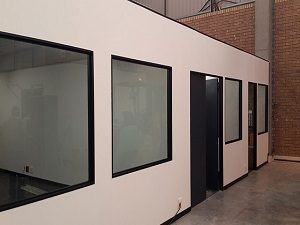
MAN Diesel

Cirebelle

Open Window

Baragwanath Hospital

Best Lazers

GKD Factory Drywall
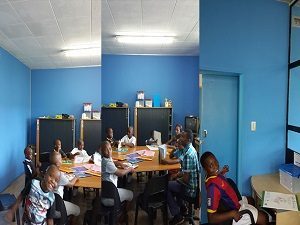
JHB Hospital School

TSC John Huxley

Satinsky

DMA
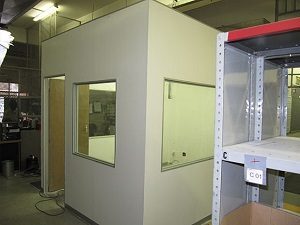
Toyota Arcadia

ICT Worx Cresta

ICT Worx Woodmead

Civil Power

Seda Rustenburg

Montesorri

Volkswagen Arcadia

Sabila

CHM

Tanya's Nail Salon

King Pie

Herbert 1

Telesure

Brian Residential Drywalling
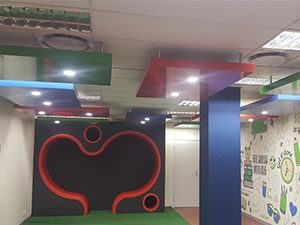
OLG Pretoria
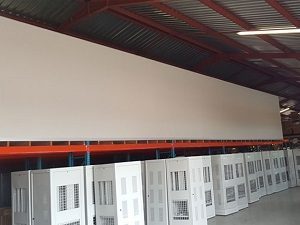
AME Montana Drywalling

Famasons

Emperors Palace Drywalling
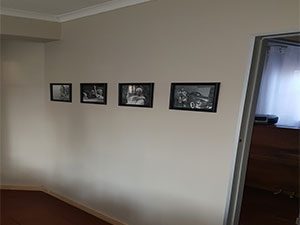
Anita Doornfontein Drywalling

OLG Durban Drywalling

Pursuit Solutions Fourways
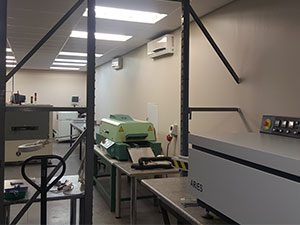
DDZ Centurion

Dadas Motors Hoarding

Cirebelle Fibre Cement Room

Duraweld

Thelma Residential Drywalling

Under Construction

Under Construction 3 We offer you quality service at a price you didn't expect and in addition our experience and versatility in the full scope of drywalling solutions. In today's day and age drywalling is your answer to almost any interior solution you are looking for. Very few people know how versatile it really is. Consequently most know it for only one or two applications where it is used and as a result will be amazed at what solutions are available... Drywalling is the process where you create almost all of your indoor walls without the use of cement and bricks. First of all, this is not only cheaper than brick walls but also much lighter, therefore, this is the preferred solution where extra weight on a slab is a risk factor. Drywalling can be shaped to fit any installation. It consists of professionally manufactured gypsum board structures and is available in various sizes and finishes and thickness and as a result, can be curved, skimmed ext... The standard height for drywalling is 2100mm and 2400mm and 2700mm and 3000mm and 3600mm. Each of these lengths is available as a 76mm system using a 50mm structure and an 89mm system using 63mm structure. In addition, a 128mm system using a 102mm structure is also available where applications need extra height and specific structural strength ext. The thickness of boards ranges from 9mm and 12mm and 15mm. Furthermore drywalling can be thermally or acoustically insulated and in areas where a fire rated wall is required. It is especially relevant that a lot of contractors inform customers that thermal insulation such as Think Pink can be used as acoustic insulation and even though it will assist to some degree it should be known that the correct acoustic solution is products such as CavityBatt which is specifically manufactured for an acoustic application. In addition, the Acoustic solutions are: 51mm RhinoWall Standard Soundblock Drywalling and has a sound rating of Rw49dB 63mm RhinoWall Standard Soundblock Drywalling and has a sound rating of Rw49dB 102mm RhinoWall Standard Soundblock Drywalling and has a sound rating of Rw52dB HiSpec RhinoWall Soundblock 63mm Drywalling and has a sound rating of Rw54dB HiSpec RhinoWall Soundblock 102mm Drywalling and has a sound rating of Rw55dB Secure RhinoWall Soundblock 102mm Drywalling and has a sound rating of Rw58dB RhinoWall PartyWall Soundblock 63mm Drywalling and has a sound rating of Rw63dB RhinoWall PartyWall Secure Soundblock 63mm Drywalling and has a sound rating of Rw63dB In addition, Standard, Fire Rated and Moisture Resistant is three types of Gypsum board available. The versatility of the Standard gypsum boards is exceptional. It is lightweight and can be used for domestic and commercial drywalling. Other versatile functions of drywalling fire Rated gypsum board is recommended in kitchens and areas where additional fire resistance is required. Therefore more than one fire rated gypsum board can be fitted to the structure eg. two fire-rated boards on each side of the fire rated structure. Most noteworthy is that in all wet areas such as bathrooms and showers, as well as locations with high humidity and moisture levels our moisture resistant Gypsum board is recommended. A moisture resistant Gypsum board is supported with special additives in the core, therefore retards the absorption rate of moisture, while ensuring that the Gypsum board maintains its high-performance level over time. All joints are fiber taped to prevent cracking and plastered and sanded to a final smooth finish. Therefore the final drywalling finish looks precisely the same as a normal plastered brick wall. In conclusion, LPMBP Construction Experts will assist you to transform the desired area to suit your needs... Below is a link which provides a bit more information on the drywalling process: Drywalling Read the full article
0 notes
Text
NC Bass-Baritone Ryan McKinny Is Ready for His Close-Up
NC Bass-Baritone Ryan McKinny Is Ready for His Close-Up

View On WordPress
0 notes
